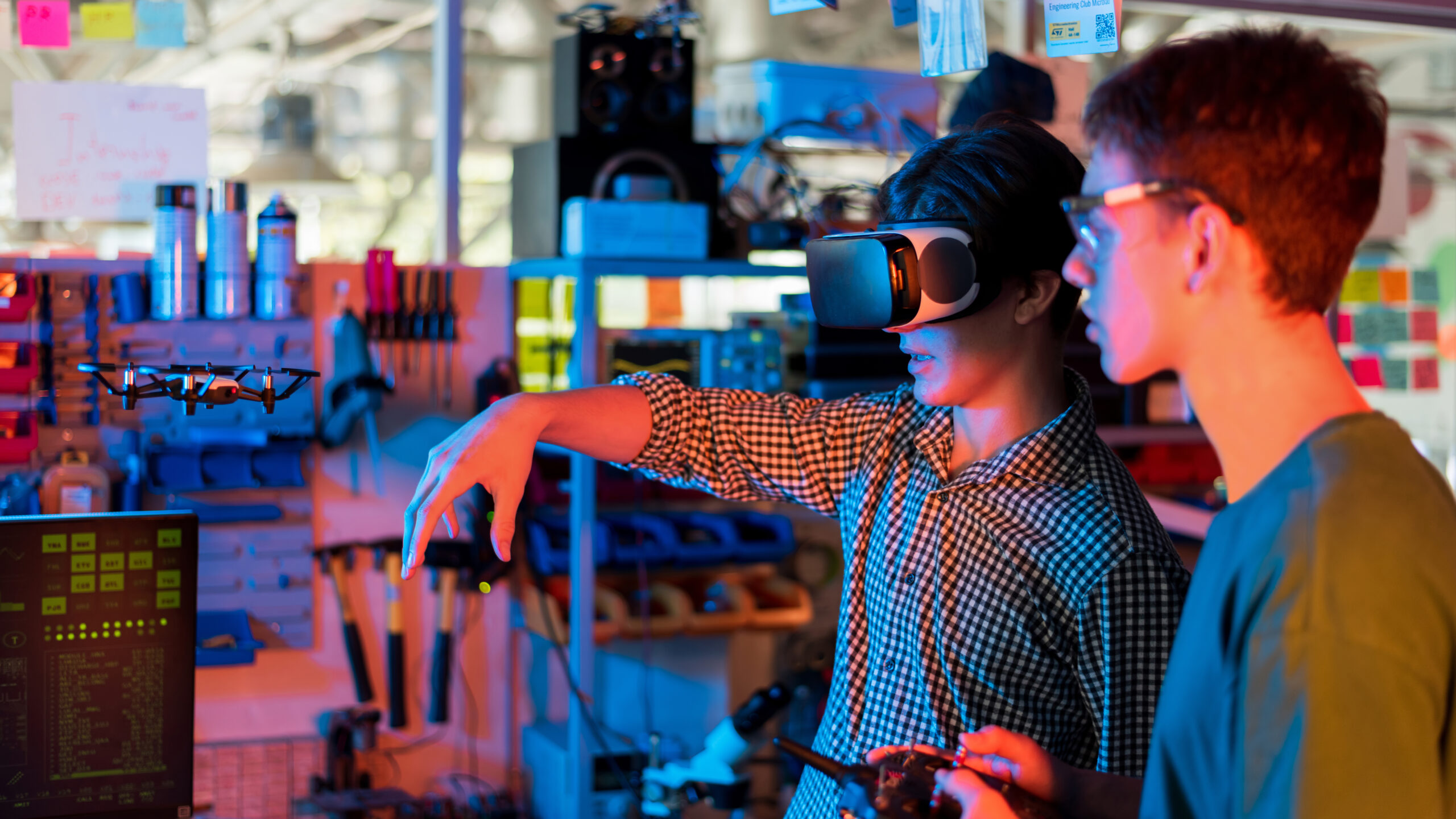Software applications are at the core of almost every corporate process in today’s digitally first world. Users anticipate faultless performance, speed, and dependability from every platform, be it banking, e-commerce, or healthcare administration. Software testing is now more important than ever to achieve these requirements. AI in testing ensures they operate properly, are safe, and provide amazing user experiences.
Traditional testing approaches struggle to keep up with software system complexity, faster release cycles, and real-time upgrades. Agile and DevOps development approaches are dynamic, making manual testing useless, error-prone, and hard to scale.
In this area, AI testing is revolutionary. Through AI for software testing, organizations are automating laborious tasks, finding hidden faults, anticipating risks, and enhancing test efficiency. Artificial Intelligence helps testing methods become smarter, faster, and more reliable while adapting and evolving in today’s competitive climate.
This blog examines how AI is changing software testing. We’ll explore important AI strategies that enhance test outcomes, showcase well-liked AI-powered solutions, discuss practical uses, tackle typical problems, and offer best practices for incorporating AI into your testing approach.
Limitations of Traditional/Manual Testing
Traditional software testing, though foundational, faces several challenges in today’s fast-moving digital environment. Some of them are:
- Time-Consuming: Manual test creation, execution, and maintenance require significant effort, slowing down release cycles.
- Human Errors: Even experienced testers can overlook bugs, particularly in repetitive or complex test scenarios.
- Limited Scalability: Testing across multiple devices, browsers, and platforms manually is nearly impossible at scale.
- Maintenance Overhead: Minor changes in applications often require extensive manual updates to test cases and scripts.
- Delayed Feedback: In a DevOps world, delayed bug discovery during manual testing can derail continuous delivery pipelines.
As software systems grow larger and more dynamic, relying solely on manual efforts is no longer sustainable.
How AI for Software Testing Solves Key Challenges?
AI in testing introduces intelligent automation and predictive capabilities, directly addressing the pitfalls of manual approaches. Here’s how:
Speed
AI drastically reduces the time needed for various testing activities:
- Automated Test Case Generation: AI can auto-generate hundreds of test cases based on code analysis or requirements.
- Self-Healing Tests: Tests adapt to small application changes without human involvement, preventing script failures.
- Continuous Testing Integration: AI expedites delivery cycles with real-time CI/CD pipeline feedback.
Impact: Faster releases without compromising quality.
Accuracy
AI minimizes human error and improves defect detection:
- Pattern Recognition: AI finds tiny defects and oddities that manual reviewers miss.
- Risk-Based Prioritization: AI helps testers prioritize high-risk regions by learning from previous defect trends.
- Smarter Assertions: AI tools can validate complex functional and UI behaviors more accurately.
Impact: Higher precision in finding critical bugs early.
Coverage
AI expands testing coverage across different environments:
- Cross-Platform Testing: AI-powered cross-platform testing evaluates devices, browsers, and OSes.
- Visual Testing: AI detects UI inconsistencies that traditional functional tests may miss.
- End-to-End Scenario Simulation: AI models user behavior patterns to simulate real-world workflows more comprehensively.
Impact: Broader, deeper testing ensures more reliable applications.
Cost-Effectiveness
AI helps cut long-term testing costs through smart resource management:
- Reduced Manual Labor: Automating tedious processes lets testers focus on exploratory and strategic testing.
- Lower Maintenance Costs: Self-healing automation and intelligent debugging decrease script maintenance costs.
- Optimized Resource Allocation: Predictive analytics guide teams to focus on areas with the highest risk and business impact.
Impact: More value delivered with fewer resources.
Why is AI Revolutionizing Software Testing?
Software development is faster, more dynamic, and smarter. To improve digital experiences, companies want faster, more accurate testing. Although useful, manual testing can’t keep up with this rapid innovation.
Manual testing takes time, is error-prone, and is hard to scale across users, devices, and platforms. When applications change often, automated testing without cognitive flexibility might fail. These issues impede release cycles and increase manufacturing problems.
Here, AI in testing is revolutionary. AI increases software testing quality by learning and adapting. By automating repetitive tasks, identifying impediments, and making real-time decisions, AI helps teams create better software faster.
How AI Techniques Improve Test Results?
AI is helping testing teams work quicker, smarter, and more precisely, not replacing them. Let’s examine the basic AI methods that are greatly increasing software test outcomes.
Test Case Generation and Optimization
Problem: Manually creating and maintaining many test cases is time-consuming and sometimes results in coverage gaps or redundancy.
AI-Based Solution: Using NLP and machine learning, AI generates test cases from requirement papers, user stories, and source code. By finding duplicate or low-value test cases, AI improves test suites.
Benefits:
- Saves time on test design.
- Increases test coverage intelligently.
- Prioritizes high-risk test scenarios.
- Keeps test cases aligned with changing business requirements.
Intelligent Test Automation and Self-Healing Scripts
Problem: Minor UI changes like upgrading element IDs or layouts can break automated test scripts, requiring costly maintenance.
AI-Based Solution: Self-healing automation is made possible by AI, which automatically updates locators in response to UI changes and keeps test script stability without the need for human intervention.
Benefits:
- Reduces script maintenance efforts by up to 80%.
- Increases reliability of automation in agile environments.
- Enables faster, more frequent software updates without breaking tests.
Predictive Analytics for Risk-Based Testing
Problem: With limited time and money, testing every functionality is nearly difficult.
AI-Based Solution: By analyzing historical defect data, recent code changes, and user behavior patterns, AI identifies and prioritizes the most critical or high-risk areas of an application for testing.
Benefits:
- Focuses efforts on areas most likely to fail.
- Increases defect detection rates early in the cycle.
- Enhances resource allocation, reducing time-to-market.
Smart Test Data Generation and Management
Problem: Obtaining diverse, high-quality, and privacy-compliant test data manually is a major challenge for comprehensive testing.
AI-Based Solution: Synthetic data creation and data masking allow AI to build realistic, representative datasets without compromising user privacy. It covers several edge circumstances and eventualities.
Benefits:
- Reduces dependency on production data.
- Protects sensitive customer information.
- Enables thorough testing with varied data sets.
Defect Prediction and Root Cause Analysis
Problem: Manually determining the underlying source of flaws might take days, which delays problem repairs and raises debugging expenses.
AI-Based Solution: By analyzing logs, performance metrics, and system behaviors, AI systems automatically identify the core cause of problems and forecast defect-prone areas based on past trends.
Benefits:
- Speeds up defect identification and resolution.
- Reduces downtime and post-release defects.
- Helps teams fix problems before they escalate.
Visual Testing with AI (UI Validation)
Problem: Traditional functional tests often miss visual inconsistencies across different browsers, devices, or screen resolutions.
AI-Based Solution: AI-driven visual testing tools perform pixel-level comparisons of the application’s UI to detect layout shifts, missing elements, color mismatches, and other visual issues.
Benefits:
- Ensures consistent visual experiences across platforms.
- Reduces UI-related defects in production.
- Automates visual verification, saving manual effort.
Continuous Testing and Monitoring in CI/CD Pipelines
Problem: In CI/CD systems, frequent code changes necessitate nonstop testing, making manual validation impossible.
AI-Based Solution: Based on code changes, AI dynamically selects, executes, and analyzes tests to automate continuous testing. It detects real-time performance decreases and UX flaws in deployed apps.
Benefits:
- Provides instant feedback in the development cycle.
- Improves build quality without slowing down releases.
- Enhances post-deployment monitoring and defect detection.
Best Practices for Using AI for Software Testing
AI in testing has many benefits, but its success depends on careful implementation. Poor planning can squander resources, produce incorrect outcomes, or prevent adoption.
Follow these software testing AI best practices to optimize its impact:
1. Start Small and Scale Gradually
Why it matters: Jumping into full-scale AI implementation without experience can overwhelm teams and cause confusion.
Best Practice:
- Begin with a pilot project — like applying AI for visual testing or self-healing automation on a small module.
- Measure performance improvements, identify challenges, and gather feedback.
- Once successful, expand AI use to broader testing workflows.
Tip: Use early wins to build organizational confidence in AI adoption.
2. Choose the Right Use Cases
Why it matters: Not every testing activity needs AI. Misapplying AI where it’s unnecessary can waste effort.
Best Practice:
- Apply AI where it adds real value — such as regression testing, cross-platform UI validation, predictive risk analysis, or data generation.
- Prioritize repetitive, time-consuming, high-volume tasks that benefit most from automation and intelligence.
Tip: Map your QA pain points to AI strengths.
3. Maintain Human-in-the-Loop Oversight
Why it matters: AI assists testers — it doesn’t replace them. Human judgment is still essential for critical thinking, creativity, and contextual analysis.
Best Practice:
- Keep testers involved in reviewing AI outputs.
- Use AI insights as recommendations, not final decisions.
- Help QA teams understand, validate, and improve AI-driven procedures.
Tip: Consider AI to be an intelligent co-pilot rather than an autopilot.
4. Feed AI With Quality Data
Why it matters: Data determines AI model performance. Unreliable forecasts and findings might stem from poor, skewed, or inadequate data.
Best Practice:
- Ensure your training data (test cases, defect logs, requirements, etc.) is clean, diverse, and representative of real-world conditions.
- Continuously update AI systems with fresh data from ongoing tests and production feedback.
Tip: Regularly audit and refresh your data sources to keep models relevant.
5. Focus on Integration with Existing Processes
Why it matters: AI tools should enhance, not disrupt, your current CI/CD pipelines, DevOps workflows, or Agile processes.
Best Practice:
- Choose AI solutions that easily integrate with your existing toolset (Jenkins, JIRA, Selenium, etc.).
- Ensure AI outputs (reports, alerts, insights) fit naturally into your team’s workflow.
- Automate wherever possible, but allow for manual triggers and overrides when needed.
Tip: Smooth integration ensures faster adoption across teams.
6. Foster a Culture of Experimentation and Learning
Why it matters: The adoption of AI is cultural rather than merely technological. To innovate, learn from errors, and improve their strategy, teams require the proper mentality.
Best Practice:
- Encourage testers to explore AI capabilities beyond initial use cases.
- Share lessons learned across teams and celebrate improvements.
- Invest in upskilling QA teams with AI, data science, and automation knowledge.
Tip: Establish an atmosphere that encourages creativity so AI can flourish.
Testing software manually across countless browsers, devices, and operating systems is no longer enough. This issue is resolved by cloud testing, which provides an instantaneous, scalable, adaptable, and economical means of testing apps across thousands of combinations without the need for physical labs.
Combining AI with a trustworthy cloud testing platform like LambdaTest maximizes software testing power.
LambdaTest is not just a cloud-based testing platform. It is a powerful enabler of AI-native testing excellence. Here’s how LambdaTest uses AI to improve test results and revolutionize software testing:
- LambdaTest does real-time visual UI testing using AI-based smart image comparisons. LambdaTest’s AI intelligently detects usability-impacting visual deviations instead of pixel-by-pixel comparison, which typically yields false positives.
- Flaky tests induced by simple UI changes like relocated buttons or modified attribute names are a major test automation difficulty. LambdaTest addresses this with self-healing automation powered by AI algorithms. When a test script hits a broken locator or modified element, the AI automatically finds alternate locators without halting or failing the test.
- LambdaTest uses AI for software testing to find actionable insights from thousands of tests. It finds test failure patterns, flaky tests, major faults, and optimizations.
- LambdaTest’s AI algorithms recommend the most important device-browser combinations based on usage, market share, and historical defects, ensuring optimal coverage without redundant testing.
- LambdaTest integrates easily with Selenium, Cypress, Appium, and others. Teams may use their favorite automation tools with AI capabilities like dynamic element identification, visual regression testing, and intelligent reporting.
Conclusion
AI is setting the standard for smarter software testing. AI enables testing teams to produce software of superior quality at previously unheard-of speed and scale by automating repetitive processes, anticipating risk areas, creating intelligent test data, and continuously learning from previous results.
The AI methods we covered, such as self-healing automation, visual validation, and intelligent test case generation, are more than just theoretical advancements. Organizations all over the world are currently utilizing these genuine, workable tactics to enhance test findings, cut expenses, and expedite the launching of more dependable products.
But using AI for software testing is a continuous process. It calls for a methodical approach that includes developing solid data foundations, selecting the appropriate use cases, starting small, and guaranteeing human control. AI has the potential to usher in a new era of more intelligent, quick, and robust quality assurance when paired with scalable technologies like cloud testing platforms.
Teams that use AI now will be better prepared to handle tomorrow’s difficulties as software complexity increases. You may revolutionize your testing procedures and establish new benchmarks for software quality by fusing human knowledge with Artificial Intelligence.




